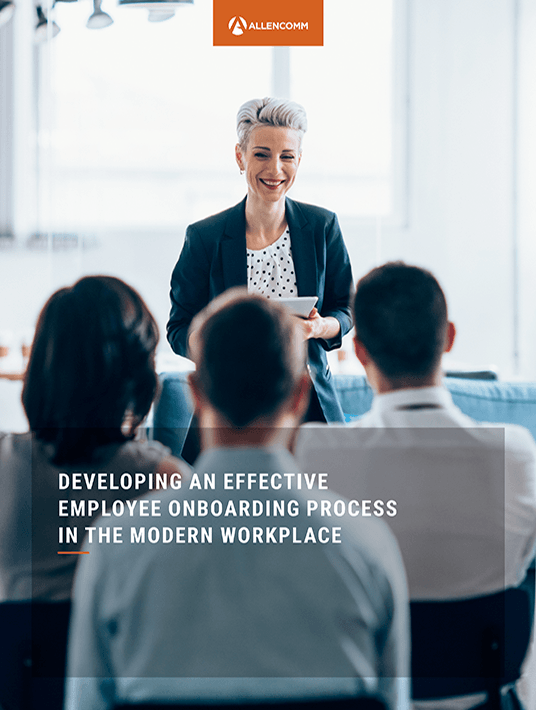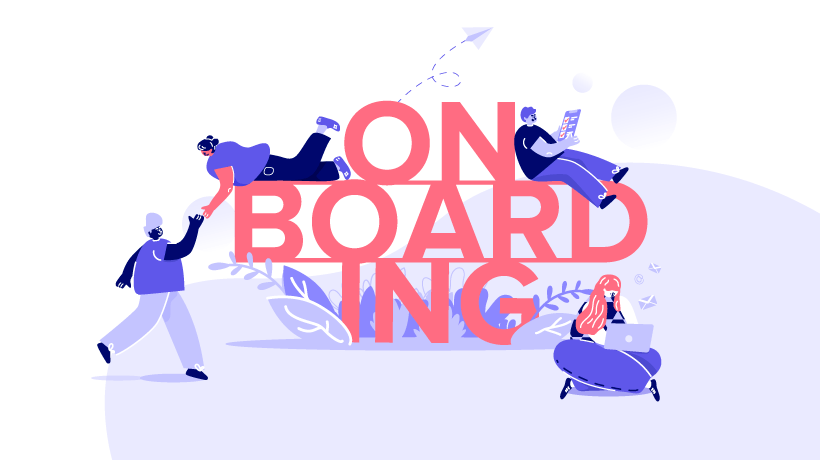Benefits For A Modern Workforce
You never get a second chance to make a first impression. This holds particularly true when it comes to employee onboarding. It's a new hire's introduction to the organization and the experience has a significant impact on employee retention. Unfortunately, that's why it's rare to see many employees with years of tenure. Research by Future Workplace found that 91% of Millennials expect to stay in a job for less than 3 years [1]. Companies lose 25% of all new employees within the first year [2], according to SHRM, but almost 70% of employees are more likely to stay with a company for 3 years if they experienced great onboarding [3].

Clearly, strong onboarding is critical for developing a modern workforce that sticks around. So, let’s consider 6 reasons why you should invest more in employee onboarding.
1. Employee Satisfaction
Providing relevant training content has a significant impact on employee satisfaction during the employee onboarding experience. However, it would be difficult to determine what is relevant without doing some initial data gathering. Use surveys and focus groups to gather insights for your learning strategy. You may discover challenges with the current training content, delivery methods, communication of expectations, as well as relevance to employee performance on day-to-day tasks.
2. Reduced Turnover
According to LinkedIn’s 2019 Workforce Learning Report, 94% of employees would stay at a company longer if it invested more in their learning [4]. However, there's also a disconnect between what an employee is trained to do and what’s expected of them. Research also cites unmet employee expectations as a reason for turnover. By communicating performance expectations and supporting skills development, effective onboarding can reduce turnover by making employees feel empowered and prepared for their responsibilities.
3. Increased Performance
Generic training that tries to be all-encompassing rarely fits the bill. Instead, employees want training content tailored to their role that takes into account different knowledge bases, skills, competencies, and responsibilities. Designing personalized training is not an easy task. It requires careful analysis and detailed performance mapping. So, start by creating a roadmap of skills, competencies, or knowledge. If you can determine how these factors contribute to the desired performance objectives, then you can create personalized learner pathways that offer learners only the information they need.
4. Increased Knowledge Retention
Learners forget around 90% of training material by the time they can apply it to work [5]. Unfortunately, repetition and reinforcement are vital aspects of training that are often, ironically, forgotten. So, don't assume that employees will continue to apply their newly acquired knowledge on the job. Plan for content reviews or condensed reminders at regular intervals to help employees retain information. Moreover, easy access to onboarding content will go a long way to increase independent content consumption.
5. Acquiring Fresh Talent
The Gallup Workforce Report found that when weighing job opportunities, millennials put the most weight in training [6]. So, as your organization’s reputation for investing in their employees’ spreads, your pool of potential hires will likely increase. This is particularly important when considering the lifespan of most skills. Companies have a constant need to bring in new employees with the skills to improve organizational performance.
6. Keeping Pace With Changing Technology
Proactive planning and rapid onboarding development will become progressively more important as L&D departments become more involved in training around digital transformation. A report by the World Economic Forum suggests that 54% of all employees will need to be significantly retrained [7] in the next 3 years due to the rate of business process and technology adoption. In that regard, employee onboarding may become more of a continuous education strategy than a single initiative. However, simply keeping up with new skills can be its own challenge. By the time most students finish their formal education, the skills critical to their future jobs have likely changed, and it's left to employee training and development efforts to get new hires up to date.
The eLearning industry has seen some significant evolutions in training technology as well. L&D teams are more frequently using AI, chatbots, and immersive learning techniques in their training strategies, and user interface design has finally started to catch up with the intuitive experience of our favorite mobile apps. There is simply more training technology out there to enhance the employee experience.
The Modern Workforce
There are certainly more reasons to invest in employee onboarding, but we can't cover them all here. Luckily, our eBook Developing An Effective Employee Onboarding Process In The Modern Workplace goes into more detail and data-driven strategies to support your training initiative. Download it now!
References:
[2] Infographic: 7 Key Employee Turnover Statistics
[3] Don't Underestimate the Importance of Good Onboarding
[4] LinkedIn Learning's 2019 Workplace Learning Report: Key Findings
[5] So Much Training, So Little to Show For It
[6] How Millennials Want To Work And Live


